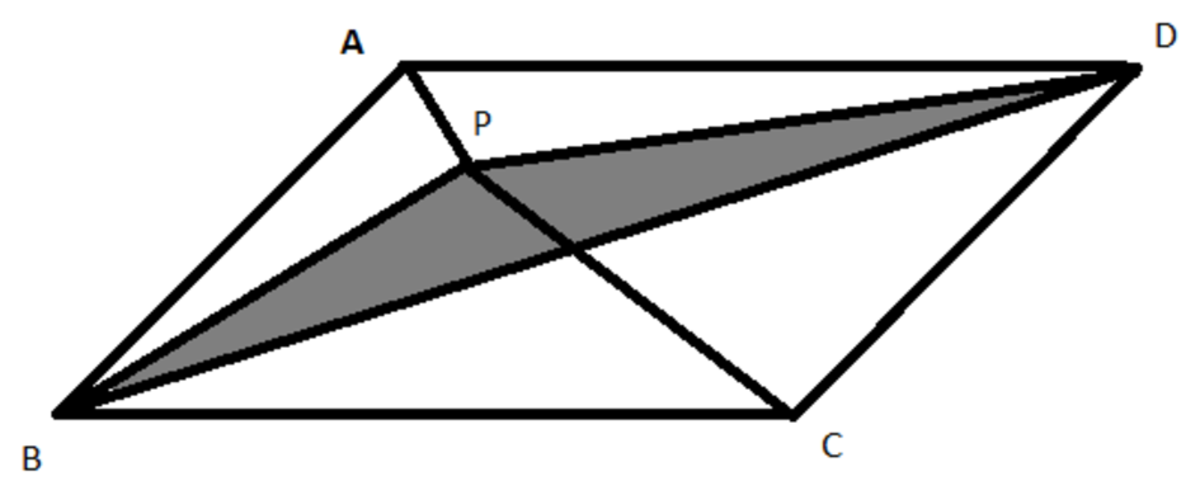Geometry Math Contest Problem

As shown above, A B C D is a parallelogram and P is a point in A B C D such that the area of △ A P B is 12 while the area of △ P B C is 20. Find the area of △ B D P .
The answer is 8.
This section requires Javascript.
You are seeing this because something didn't load right. We suggest you, (a) try
refreshing the page, (b) enabling javascript if it is disabled on your browser and,
finally, (c)
loading the
non-javascript version of this page
. We're sorry about the hassle.
2 solutions
Let h be the height of parallelogram A B C D , b be the base of parallelogram A B C D , and x be the height of △ A P D .
Then A △ A B D = 2 1 b h , A △ P B C = 2 1 b x , and A △ A P D = 2 1 b ( h − x ) = 2 1 b h − 2 1 b x = A △ A B D − A △ P B C .
Since A △ A B D = A △ B D P + A △ A P B + A △ A P D and A △ A P D = A △ A B D − A △ P B C , A △ B D P = A △ P B C − A △ A P B = 2 0 − 1 2 = 8 .
Let the area of triangle A P D be x and the area of triangle D P C be y ,
Since A D = B C and C D = A B ,
Area of triangle A P D + 2 0 = Area of triangle D P C + 1 2 as two pairs of triangles sum to half of the area of parallelogram
⇒ x + 2 0 = y + 1 2 ⇒ y = x + 8
Half of the area of parallelogram = 2 1 2 + 2 0 + x + x + 8 = 2 0 + x
Area of triangle B D P = 2 0 + 8 + x − ( 2 0 + x ) = 8